How to Change WordPress from Blog to Website? Are you looking to transform your WordPress website from a simple blog into something more versatile? WordPress is an incredibly powerful platform, and with the right knowledge, it’s possible to turn any blog into a fully-functional website.
You can change your WordPress Blog to a versatile website with a few simple steps. This step-by-step guide will show you how to convert WordPress from a blog for inspiration into a website, as well as what questions to ask a web designer before making the transition.
- Assessing Your Requirements
- Selecting the Right Theme
- Customizing the Theme
- Creating Essential Pages
- Implementing a Navigation Menu
- Managing Widgets and Sidebars
- Utilizing Custom Page Templates
- Incorporating Plugins for Enhanced Functionality
- Integrating E-commerce Functionality (if applicable)
- Optimizing SEO Settings
- Testing and Quality Assurance
- Backing up Your Website
- Launching Your New Website
Table of Contents
Changing WordPress from a blog to a fully-functional website.
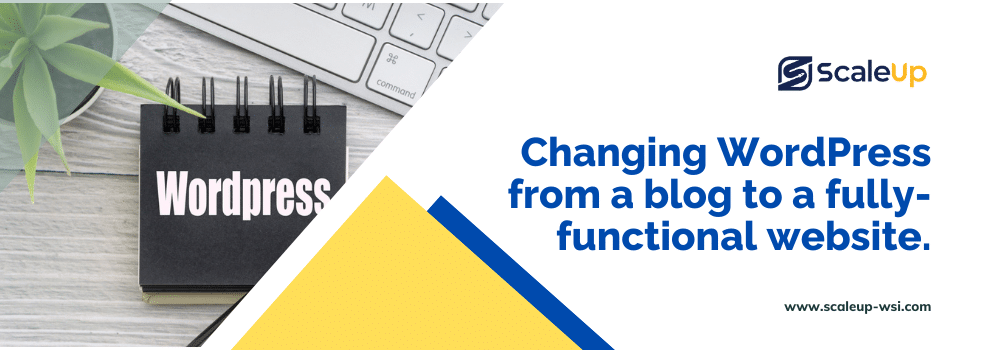
Changing WordPress from a personal blog launch to a fully-functional website is an excellent option if you are looking for something more versatile. With the right knowledge, you can easily create a professional-looking website using WordPress. This guide will show you how to make the transition and what questions to ask a web designer before starting.
Tailoring the platform to suit specific website needs.
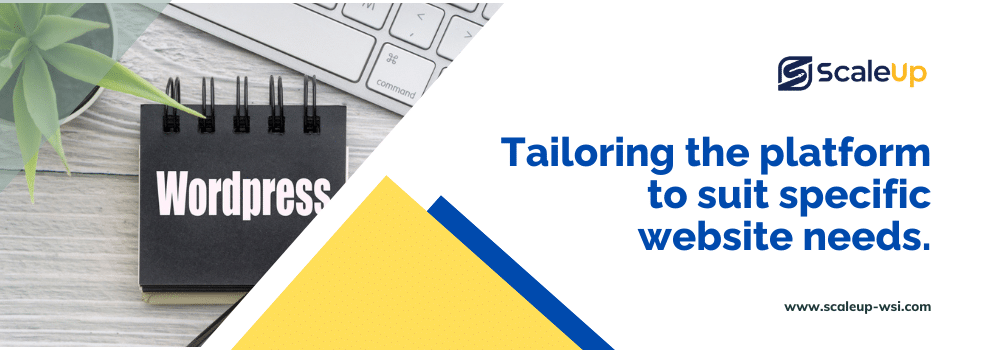
When transitioning from a business blog to a website, it’s important to tailor the WordPress platform to suit the specific needs of your website. This includes choosing the right plugins and themes that will improve the user experience, as well as customizing settings for search engine optimization (SEO).
1. Assessing Your Requirements

Before making any changes to your WordPress blog, it’s important to assess your requirements. This will help you determine what plugins and themes are needed for the website, as well as how much customization is required. It’s also a good idea to think about what content management system (CMS) you’ll be using.
1.1. Identifying the website’s purpose and goals.
It’s important to identify the purpose and goals of the website before making any changes. Think about what type of content you want to include, who your target audience is, and how you’ll be measuring success. Once you have clarity on these points, it will be easier to make decisions when customizing the platform.
1.2. Listing essential features and functionalities required for the website.
When transitioning your WordPress blog to a website, it’s important to determine the essential features and functionalities that you need. This includes considering the user experience, search engine optimization (SEO), as well as other customizations required for the website. Make sure to list out these items prior to making any changes so that you can communicate them clearly when speaking with web designers.
1.3. Understanding the target audience and user experience expectations.
It’s important to understand the target audience and user experience expectations when transitioning WordPress from a blog post structure to a website. Think about the type of content you will be providing, as well as how users will interact with it. Consider what features are needed to make the user experience more enjoyable, such as intuitive navigation or search functionality.
2. Selecting the Right Theme
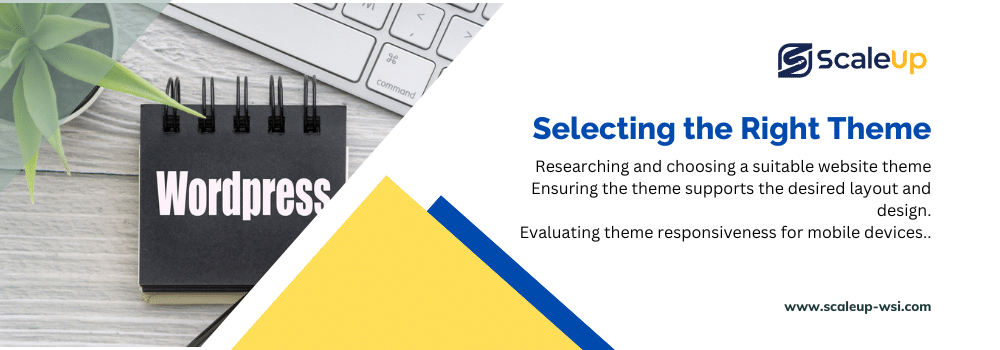
One of the most important steps in transitioning WordPress from a blog to a website is selecting the right theme. The right theme should be visually attractive, easy to use, and responsive so that it looks good on different devices. It’s also important to consider the features included in the theme, such as page layouts, navigation options, and other customizations that are needed for your website.
2.1. Researching and choosing a suitable website theme.
When researching and selecting a theme for your WordPress website, it’s important to consider the features that you need. Look for themes with page layouts, navigation options, and other customizations that are suitable for your website. Ensure that the theme is visually attractive as well as responsive so that it looks good on different devices.
2.2. Ensuring the theme supports the desired layout and design.
When selecting a theme for your WordPress website, it’s important to ensure that it supports the desired layout and design. Consider the page layouts and navigation options needed for the website, as well as any other customizations required for the user experience. Make sure that the theme is easy to use, visually attractive, and responsive so that it looks good on different devices.
2.3. Evaluating theme responsiveness for mobile devices.
It’s important to evaluate the theme for mobile responsiveness when transitioning WordPress from a blog article to a website. Ensure that the theme looks good on different devices, including tablets and smartphones. Consider page layouts, navigation options, and other customizations required for the user experience across multiple devices. Make sure that the theme is easy to use and visually attractive as well as responsive to different screen sizes.
3. Customizing the Theme
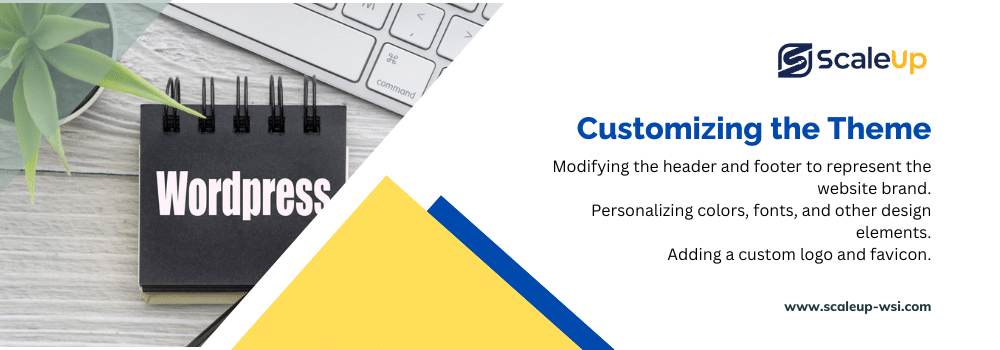
Once you have selected a suitable responsive theme for your WordPress website, you can begin to customize it. This includes adding page layouts, navigation options, and other customizations that are needed for the user experience. You can also add plugins to improve the functionality of the website as well as optimize the content for search engine optimization (SEO).
3.1. Modifying the header and footer to represent the website brand.
Customizing the header and footer of your WordPress website is an important step when transitioning from a blog setup service to a website. This includes adding branding elements such as logos, colors, and typography that represent the website brand. These changes will help make the website more recognizable for users and ensure it’s consistent with other branding materials.
3.2. Personalizing colors, fonts, and other design elements.
Customizing the colors, fonts, and other design elements of your WordPress website is an important step in the transition process. This includes selecting colors that match the website brand as well as fonts that are easy to read and visually appealing. Other design elements such as page layouts and navigation options should also be considered when making changes for a more personalized experience.
3.3. Adding a custom logo and favicon.
Adding a custom logo and favicon to your WordPress website is an important step when transitioning from a blog private domain to a website. This will make the website more recognizable for users and ensure it’s consistent with other branding materials. The logo should be visually appealing and represent the brand, while the favicon should be easy to identify at a glance. Both elements should be optimized for different devices to provide an optimal experience for users.
4. Creating Essential Pages

Creating essential pages on the website is important to ensure that users have access to all of the information they need. This includes pages such as a home page, contact page, and FAQs page that provide key information about the business. Other pages like services or products should also be included depending on what types of content is being provided.
4.1. Setting up a static homepage.
Setting up a static homepage is one of the most important steps when transitioning WordPress from a blog theme to a website. This page should include key information about the business as well as links to other essential pages. It’s also important to ensure that the content on this page is organized in an intuitive way so users can quickly find what they need.
4.2. Designing an “About Us” page to introduce the website.
Designing an “About Us” page is a key step when transitioning WordPress from a blog to a website. This page should provide information about the business, including its mission, history, and team members. It’s also important to include any awards or certifications that demonstrate the quality of the hosting services provided by the business. Additionally, this page can help build credibility with users, as it helps them feel connected to the website.
4.3. Creating a “Contact Us” page with relevant contact information.
Creating a “Contact Us” page is essential when transitioning from Blog WordPress-style to a website. This page should include contact information such as an email address, phone number, or physical address. It’s important to make sure that this information is up-to-date and accurate so users can easily get in touch with the business when needed.
5. Implementing a Navigation Menu
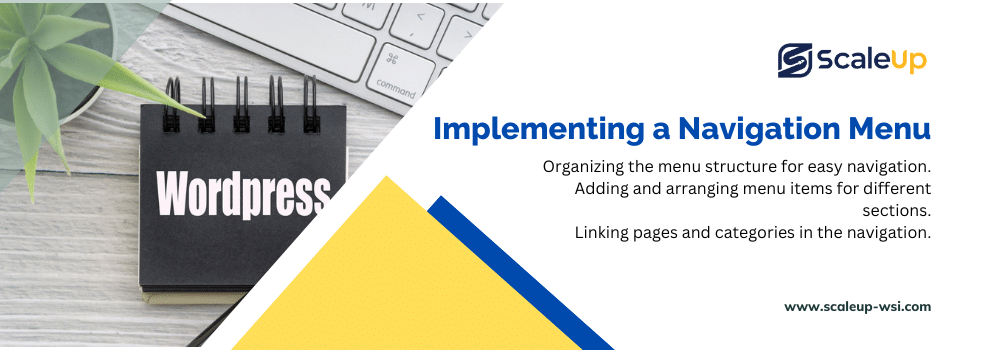
Implementing a navigation menu is essential when transitioning WordPress from a blog to a website. This will help users easily find the information they need and direct them to other important pages. When designing the navigation menu, consider the essential pages such as the home page, contact page, and FAQs page, as well as any services or products that are offered on the website.
5.1. Organizing the menu structure for easy navigation.
Organizing the menu structure for easy navigation is an important step when transitioning to a WordPress website. Consider what essential pages are needed and how they should be ordered for optimal usability. The main menu and sub-menus should be clearly labeled and organized in a way that makes sense, so users can quickly find what they need on the website.
5.2. Adding and arranging menu items for different sections.
Adding and arranging menu items is an essential step when transitioning to a WordPress website. This includes organizing the main menu and sub-menus into different sections that are easy for users to access. Consider what pages should be included, such as a home page, contact page, blog, products or services page, and any other relevant content.
5.3. Linking pages and categories in the navigation.
Linking pages and categories in the navigation is an important step when transitioning to a WordPress website. This will help ensure that users can quickly access the content they need on the website. Consider linking static pages such as home, contact, and about us, as well as any blog posts or other dynamic content that needs to be easily accessible.
6. Managing Widgets and Sidebars
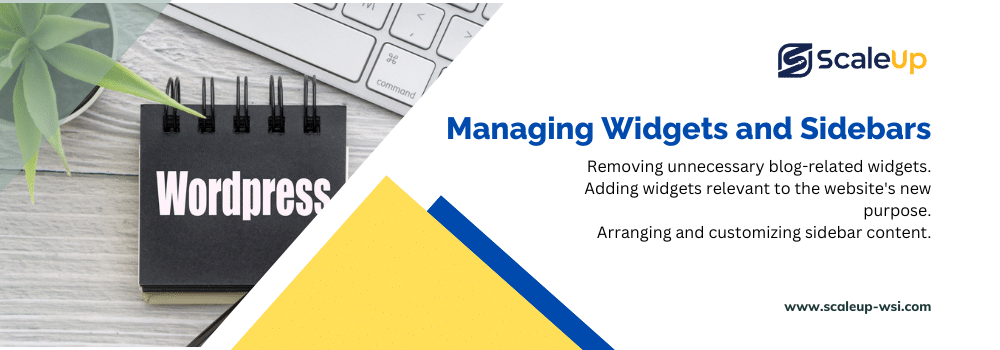
Managing widgets and sidebars in WordPress is an important step when transitioning from a blog to a website. Widgets can be used to display content such as recent posts, comments, or pages. Sidebars can also be used to add additional information and links for users, which will help improve the overall usability of the website. When setting up widgets and sidebars, it’s important to consider the user experience and design elements for maximum efficiency.
6.1. Removing unnecessary blog-related widgets.
Removing unnecessary blog-related widgets is an important step when transitioning WordPress from a blog to a website. This includes removing widgets such as “recent posts” or “categories”, which are no longer relevant to the website content. Additionally, other elements such as links to external blogs should also be removed, as they can distract users from the main content on the website.
6.2. Adding widgets relevant to the website’s new purpose.
Adding widgets relevant to the website’s new purpose is essential when transitioning WordPress from a blog to a website. This includes adding elements such as search bars, contact forms, and social media links that aid in user interaction. Widgets can also be used to display content such as recent posts, comments, or pages that are related to the new purpose of the website.
6.3. Arranging and customizing sidebar content.
Arranging and customizing sidebar content is an important step when transitioning to a WordPress website. This includes organizing widgets and sidebars into different sections to make the content easier to navigate. Sidebar content should also be customized with elements such as background colors, borders, or fonts to improve the overall design of the website.
7. Utilizing Custom Page Templates
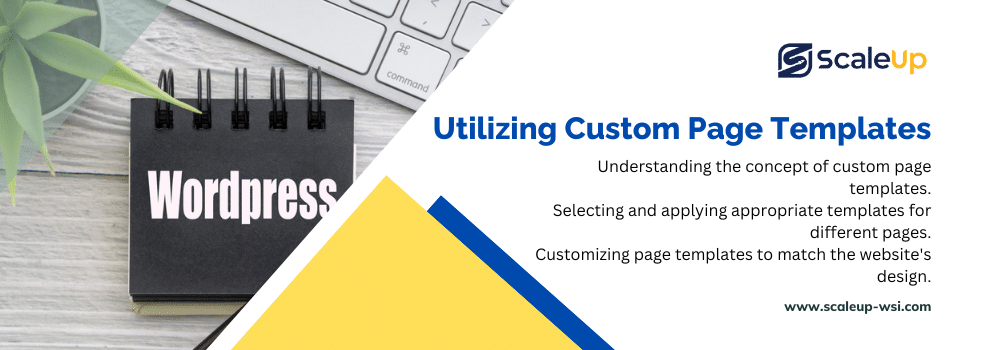
Utilizing custom page templates is an effective way to customize the look and feel of a WordPress website. These templates can be used to create unique designs for specific pages, such as contact forms or product landing pages. Additionally, these custom page templates can help improve user experience by making it easier to find the information they need on the website.
7.1. Understanding the concept of custom page templates.
Custom page templates are pre-designed layouts for web pages that can be used to customize the look and feel of a WordPress website. These templates are created with HTML and CSS and can be used to create unique designs that reflect the specific purpose of the page. Additionally, custom page templates can help improve user experience by making it easier to find relevant information on the website.
7.2. Selecting and applying appropriate templates for different pages.
Selecting and applying appropriate templates for different pages is an important step when transitioning to a WordPress website. Consider the content and purpose of the page when selecting the right template. For example, if the page contains contact information, then using a contact form template would be beneficial. Additionally, consider how each template will affect user experience, as certain designs can be more effective than others.
7.3. Customizing page templates to match the website’s design.
Customizing page templates to match the website’s design is an important step when transitioning to a WordPress website. This includes altering the HTML and CSS code of the template to reflect the overall design of the website. Additionally, consider how customizations will affect user experience, as small changes such as font size or background colors can make a big impact on how information is consumed.
8. Incorporating Plugins for Enhanced Functionality
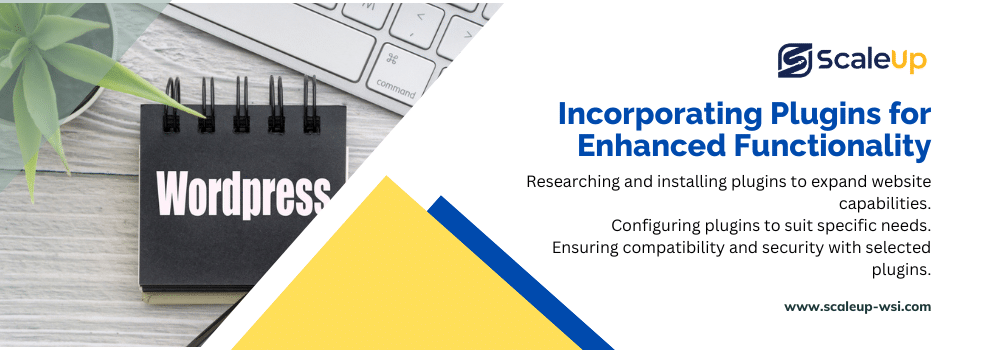
Incorporating plugins into a WordPress website is an effective way to enhance its functionality. Plugins can be used to add features such as contact forms, social media integration, and e-commerce capabilities. Additionally, plugins help streamline certain processes, such as SEO optimization or content management. Choosing the right plugins for a website is an important step when transitioning from a blog to a website.
8.1. Researching and installing plugins to expand website capabilities.
Researching and installing plugins to expand website capabilities is an important step when transitioning to a WordPress website. This includes researching available plugins that will help improve the functionality of the website, such as contact forms or e-commerce features. Once the appropriate plugins have been identified, it’s important to install them correctly in order to ensure they work properly on the website.
8.2. Configuring plugins to suit specific needs.
Configuring plugins to suit specific needs is an important step when transitioning to a WordPress website. This includes setting up each plugin according to its intended purpose, such as configuring a contact form or setting up an e-commerce store. Additionally, consider how certain configurations will affect user experience, as certain settings may be more beneficial than others.
8.3. Ensuring compatibility and security with selected plugins.
Ensuring compatibility and security with selected plugins is an essential step when transitioning to a WordPress website. This includes verifying that the selected plugins are compatible with the version of WordPress being used, as well as ensuring that they have been updated for the most recent security patches. Additionally, consider any third-party services utilized by the plugins, such as payment processors or email services, to ensure that they are secure and up-to-date.
9. Integrating E-commerce Functionality (if applicable)
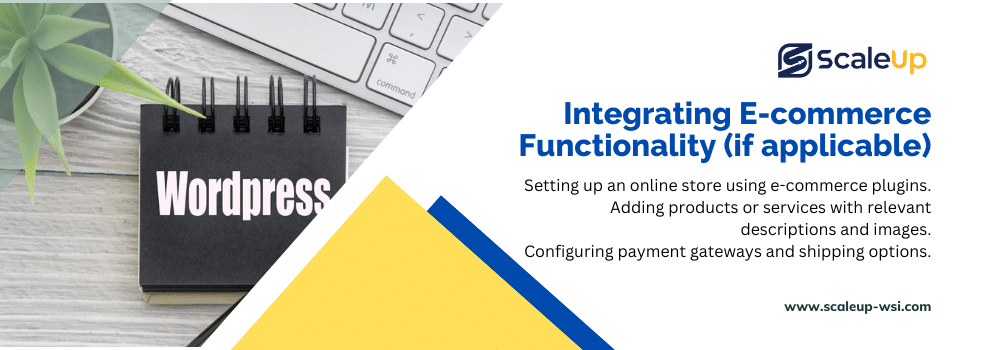
Integrating e-commerce capabilities into a WordPress website is an important step when transitioning from a blog to a website. This includes researching and installing plugins that provide features such as online payment processes, product catalogs, and shipping tracking tools. Additionally, extra steps must be taken to ensure the security of transactions, such as enabling SSL certificates or configuring secure payment gateways.
9.1. Setting up an online store using e-commerce plugins.
Setting up an online store using e-commerce plugins is a straightforward process for WordPress websites. First, research and install the appropriate plugins that provide the functionality to create an online store on the website. Then, configure settings such as payment processors or product catalogs according to their intended purpose. Finally, ensure proper security measures are in place to protect transactions made on the website.
9.2. Adding products or services with relevant descriptions and images.
Adding products or services to an e-commerce website is a necessary step when creating an online store. This includes uploading relevant product descriptions as well as images, ensuring that they are accurate and up-to-date. Additionally, consider how certain descriptions and images will affect user experience, as they should be professional and inviting in order to encourage customers to make a purchase.
9.3. Configuring payment gateways and shipping options.
Configuring payment gateways and shipping options is a crucial step when setting up an e-commerce store. This includes researching, selecting, and integrating the appropriate payment processors into the website. Additionally, consider what shipping options should be available to customers, such as flat rate or free shipping, in order to ensure a seamless ordering process.
10. Optimizing SEO Settings
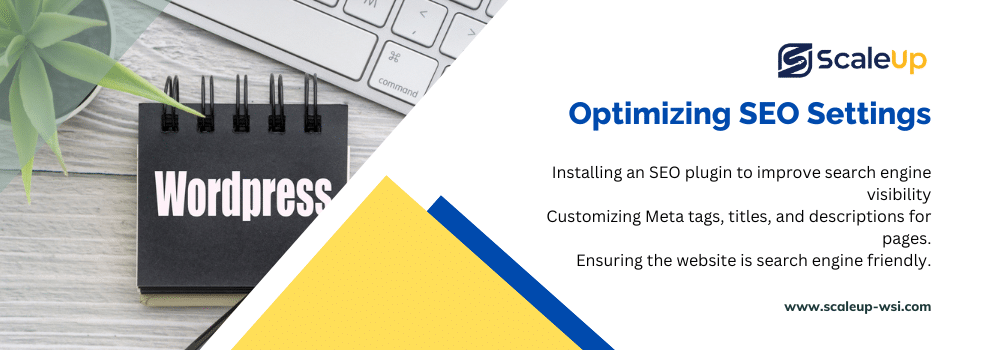
Optimizing SEO settings is an important step when transitioning to a WordPress website. This includes making sure that the website’s content is properly structured for search engine crawlers, as well as updating Meta information and integrating social media to blogging platforms. Additionally, consider creating an XML sitemap that contains links to all of the pages on the website in order to ensure they are crawled by search engines.
10.1. Installing an SEO plugin to improve search engine visibility.
Installing an SEO plugin to improve search engine visibility is a simple process for WordPress websites. First, research and install the appropriate plugins that provide the necessary tools for optimizing SEO settings. Then, configure settings such as meta information or content structure according to their intended purpose. Finally, ensure proper security measures are in place to protect transactions made on the website.
10.2. Customizing Meta tags, titles, and descriptions for pages.
Customizing Meta tags, titles, and descriptions for pages is an essential step when optimizing SEO settings on a WordPress website. This includes ensuring that each page has unique, keyword-rich titles and descriptions. Additionally, consider utilizing the appropriate meta tags in order to help search engines index the website correctly. Lastly, link relevant pages together using internal links in order to create a more cohesive website structure.
10.3. Ensuring the website is search engine friendly.
Ensuring the website is search engine friendly is an important step when optimizing SEO settings on a WordPress website. This includes making sure that all content is properly structured, such as utilizing HTML tags and Meta information correctly. Additionally, consider creating an XML sitemap that contains links to all of the pages on the website in order to ensure they are crawled by search engines.
11. Testing and Quality Assurance
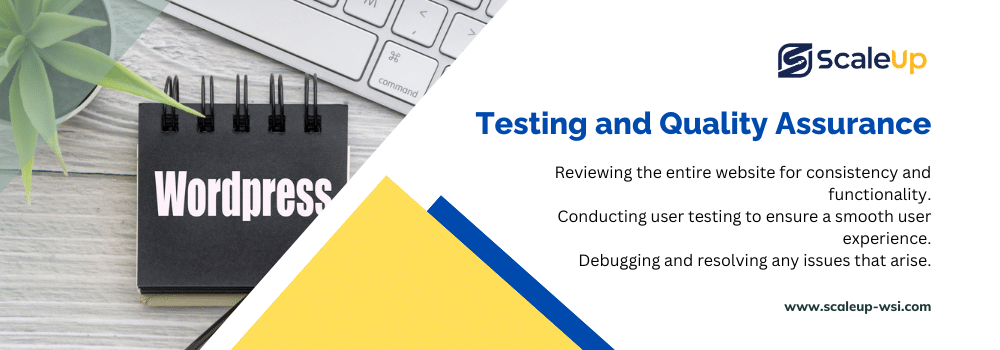
Testing and Quality Assurance is an essential step when transitioning to a WordPress website. This includes verifying website functionality across different browsers and devices, as well as ensuring that the codebase is secure and free of errors. Additionally, consider running user experience tests in order to identify potential issues before they become major problems. By performing thorough testing and quality assurance, any potential issues can be identified and resolved before launch.
11.1. Review the entire website for consistency and functionality.
Reviewing the entire website for consistency and functionality is an important step when testing a WordPress website. This includes verifying that all of the pages, features, and content are functioning correctly across different browsers and devices. Additionally, consider running user experience tests in order to identify potential issues with navigation or usability before they become major problems.
11.2. Conduct user testing to ensure a smooth user experience.
Conducting user testing is an essential step when ensuring a smooth user experience on a WordPress website. This includes having individuals interact with the website and identify any potential issues that may arise, such as navigation or usability problems. Additionally, consider running tests across different browsers and devices to ensure that the website functions properly across all platforms.
11.3. Debugging and resolving any issues that arise.
Debugging and resolving any issues that arise is a necessary step when testing a WordPress website. This includes identifying errors in the codebase, such as syntax or logical mistakes, and correcting them accordingly. Additionally, consider setting up appropriate logging tools to help identify and track potential issues before they become major problems. Debugging and resolving any issues that may arise ensures that the website remains stable and secure after launch.
12. Backing up Your Website
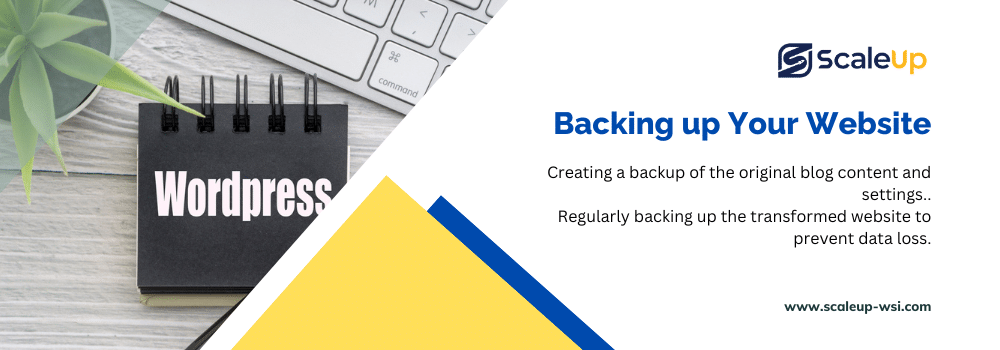
Backing up your website is an important step when transitioning to a WordPress website. This includes creating regular backups of the entire website, as well as making sure that all content is stored securely off-site in case of data loss or other unexpected circumstances. Additionally, consider automating the backup process so that it runs regularly and without user intervention.
12.1. Creating a backup of the original blog content and settings.
Creating a backup of the original blog content and settings is an essential step when transitioning to a WordPress website. This includes creating a full, comprehensive archive of all content including posts, pages, images, files, databases, and themes. Additionally, consider keeping the backup stored securely off-site in case of data loss or other unexpected circumstances. Automating the backup process ensures regular backups and reduces the risk of data loss.
12.2. Regularly backing up the transformed website to prevent data loss.
Regularly backing up the transformed website is an important step when transitioning to a WordPress website. This includes creating full backups of all content, including posts, pages, images, files, databases, and themes. Additionally, consider storing the backup securely off-site in case of data loss or other unexpected circumstances. Automating the backup process ensures regular backups and reduces the risk of data loss.
13. Launching Your New Website

Launching your new website is the final step when transitioning to a WordPress website. This includes performing a few last checks and tests of the website, such as verifying all content is correct and ensuring that no errors or bugs have been left unresolved. Additionally, consider setting up appropriate analytics tools to monitor visitor behavior and other key metrics.
13.1. Informing users and followers about the transition.
Informing users and followers about the transition is an important step when launching a new WordPress website. This includes letting them know about any changes that have been made, such as new features or design updates. Additionally, consider creating a plan to monitor user feedback and identify any potential issues that may arise after launch.
13.2. Double-check all aspects before making the website live.
Double-checking all aspects before making the website live is an essential step when launching a WordPress website. This includes verifying that all content is correct and ensuring there are no errors or bugs that have been left unresolved. Additionally, consider testing the website across different browsers and devices to make sure it functions properly.
Conclusion
The research about “How to Change WordPress from Blog to Website” has been completed to provide a step-by-step guide on how to transform WordPress from a blog into a website. By following the steps outlined in this article, it is possible to successfully transition your WordPress blog to an optimized and versatile website.
This guide covers topics such as testing and quality assurance, debugging any issues that arise, creating backups of original content and settings, informing users and followers about the transition, and double-checking all aspects before making the website live.
Faqs
Q1. WordPress blog?
A1. WordPress is a popular option content management system (CMS) used to create websites and blogs. It provides an easy-to-use interface for creating content, managing users, and customizing the design of your website or blog.
Q2. What are the main benefits of converting from a blog to a website?
A2. The main benefits of converting from a blog to a website include having more control over the design, being able to add additional features and functionality, and having a better overall user experience. Additionally, you can easily monitor visitor behavior and set up analytics tools for further analysis.
Q3. How do I start creating my WordPress website?
A3. To start creating your WordPress website. First, choose a web hosting provider. Next, purchase a domain name and install WordPress on the server. Then, you will need to select and install a premium theme as well as any necessary plugins or extensions. Finally, you can start creating content and customizing the design of your website.
Q4. Is WordPress a blog or website?
A4. WordPress is both a blog and website platform. It provides users with an easy-to-use interface to create content, manage users, and customize the design of their website or blog. With the right knowledge, it’s possible to use WordPress to turn any blog into a fully-functional website.
Q5. WordPress set up a website?
A5. To set up a website on WordPress. First, choose a web hosting provider. Next, purchase a domain name and install WordPress on the server. Then, you will need to select and install a theme as well as any necessary plugins or extensions. Finally, you can start creating content and customizing the design of your website.
Q6. How to convert Blogspot into website?
A6. To convert a Blogspot blog to a website, first, create a backup of your content and settings. Next, you will need to purchase a domain name and web hosting for the new site. Then, install WordPress onto the server and set up the necessary databases. Finally, migrate your content from Blogspot using tools such as Google’s Blogger Importer.
